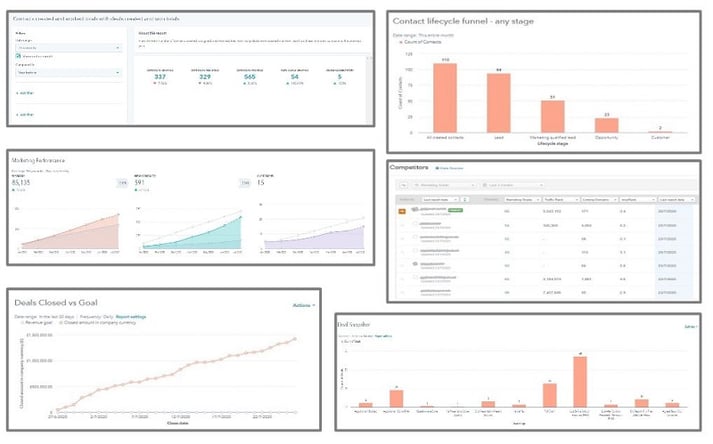6 Sales Performance Tools You’ll Want To Start Using Today

Good sales performance is the lifeblood of businesses of any size. With the growing power and accessibility of marketing and sales automation platforms – HubSpot being the leading example – improving sales has become an increasingly data-driven process.
These affordably priced platforms have placed an advanced sales management toolkit at the disposal of even small businesses, enabling ambitious sales strategies without huge staff and operational expenses.
There are many dedicated customer relationship management tools that allow business owners to track multiple metrics and eventually boost their bottom line. These software solutions feature at-a-glance and user-friendly dashboards that can help every SME business owner optimise sales.
Sales management dashboards offer a wealth of data related to key metrics, and can be personalised so you only focus on the ones that matter to your businesses. Below is an overview of the top six types of sales management dashboards you can use to increase revenue. These aren’t product-specific but are included in many premium platforms. Get in touch, or consult the software vendor directly if you are unsure.
1) Win / Loss Rate Dashboard
This provides essential information that helps you identify areas of opportunity and obstacles to conversion so you can increase sales volume. You can also use win / loss rates for benchmarking purposes by comparing them to average rates for your industry.
2) Sales Pipeline Dashboard
Because sales are a dynamic process, you’ll want to have a time-bound overview of it. A pipeline dashboard allows you to view leads and open opportunities by stage, which is crucial when it comes to creating bespoke paths to boost conversion.
3) Sales Cycle Dashboard
This dashboard quantifies how long it takes to win a sale and thus yields valuable insights into how leads progress through the sales funnel. You can use the data to adjust your strategy and achieve shorter and frictionless sales cycles. This is especially important for small businesses and those in their in initial stages, when generating revenue fast and consistently is crucial to survival.
4) Lead Source Dashboard
Some channels are more efficient than others bringing qualified leads in. The information provided through this dashboard can help identify the best performing lead sources, so you can invest in them instead of allocating resources to less productive channels.
5) Sales Forecast Dashboard
This dashboard offers information on sales projections for each period or time frame (this can normally be customised). When combined with data from other dashboards (such as win / loss rate or sales cycle), the sales forecast dashboard plays a critical role in helping you assess how accurate your goal setting process is. Once you know this, you can make the necessary adjustments to stay on track.
6) Competitor Tracking Dashboard
Using a similar process to keyword monitoring, this dashboard allows you to track what your competitors are doing well and also what opportunities they are missing. With this information handy, you can position your business as a market leader. You can also use this dashboard to perform competitive analysis for strategic product development and to launch marketing campaigns that give a boost to your bottom line.
Next Steps
Owners of small business have much to gain from using dashboards to monitor sales performance. This is only a small part of marketing and sales automation, one of our specialisms at JDR.
Get in touch today for more information on how automating your sales management processes can boost your sales performance.


